1. Their Tongues Are Insanely Long—and Go Up Their Skulls
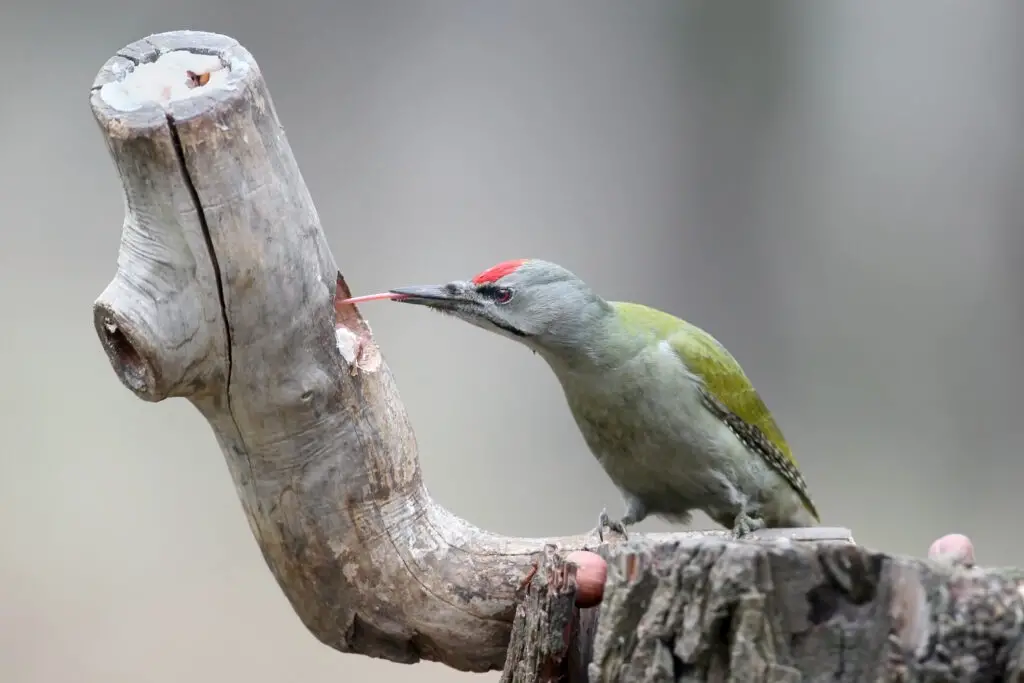
Woodpeckers have tongues that are up to three times the length of their beaks. When not in use, the tongue retracts into a cavity that wraps around the back of their skulls like a built-in slingshot. This unusual anatomy helps them reach deep into tree bark to grab tasty insects. But it’s not just practical—it also cushions their brains from the impact of all that pecking. So, while woodpeckers are hammering away at trees, their tongues are multitasking as brain helmets. Weird? Yes. Genius? Absolutely.
2. They Peck at 20 Times Per Second Without a Headache
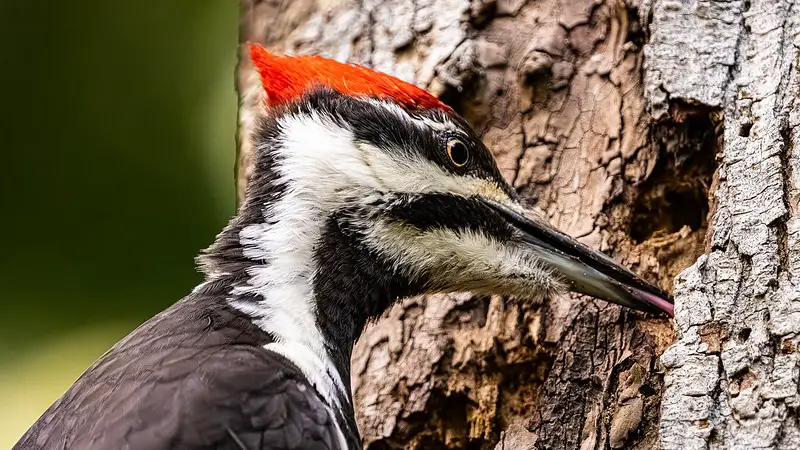
If you think your workday is rough, imagine banging your head into a tree 20 times per second. Woodpeckers endure this without so much as a headache thanks to their specially adapted skulls and spongy bone structures that absorb shock. They peck up to 12,000 times a day during nesting season, putting even the most persistent humans to shame. Fun fact: Their eyes have built-in protection to keep sawdust out and avoid “tree debris blindness.” Who knew woodpeckers were the ultimate multitasking champions?
3. Their Beaks Are Like Jackhammers on Steroids
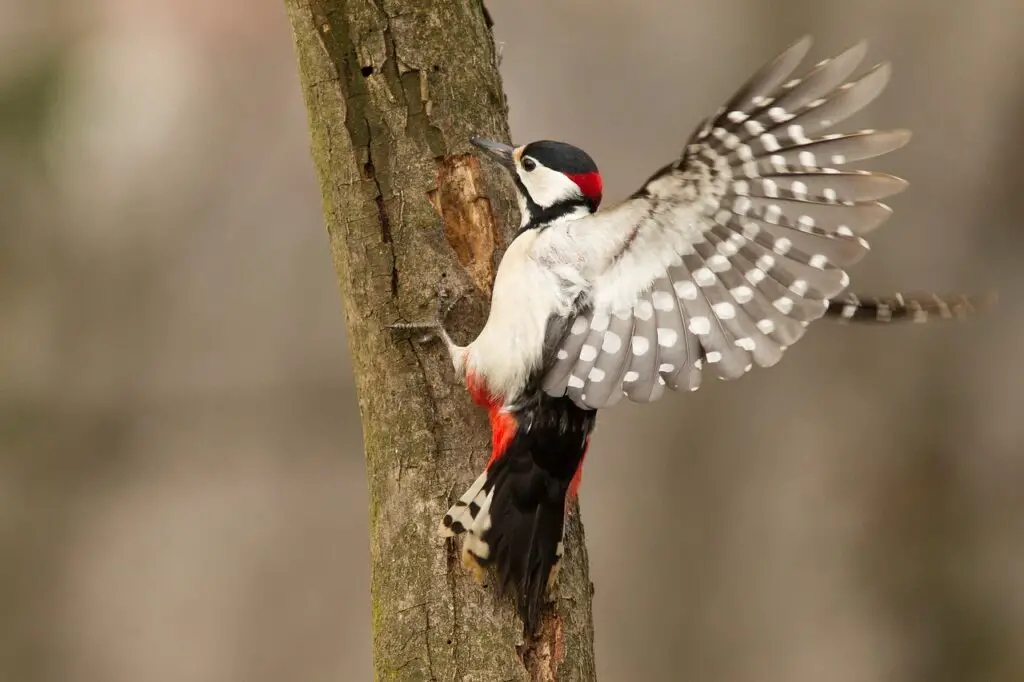
A woodpecker’s beak might look ordinary, but it’s an engineering marvel. It’s designed to withstand relentless pounding without cracking or wearing out. The upper and lower beak work together like a shock absorber, redirecting impact forces away from their heads. They even have bristly feathers around their nostrils to keep out wood dust. And here’s the kicker: they don’t just peck to find food—they also drum to attract mates and mark their territory. Woodpeckers are basically nature’s most determined DIY builders.
4. They Can “Climb” Trees with Two Toes Pointing Backward
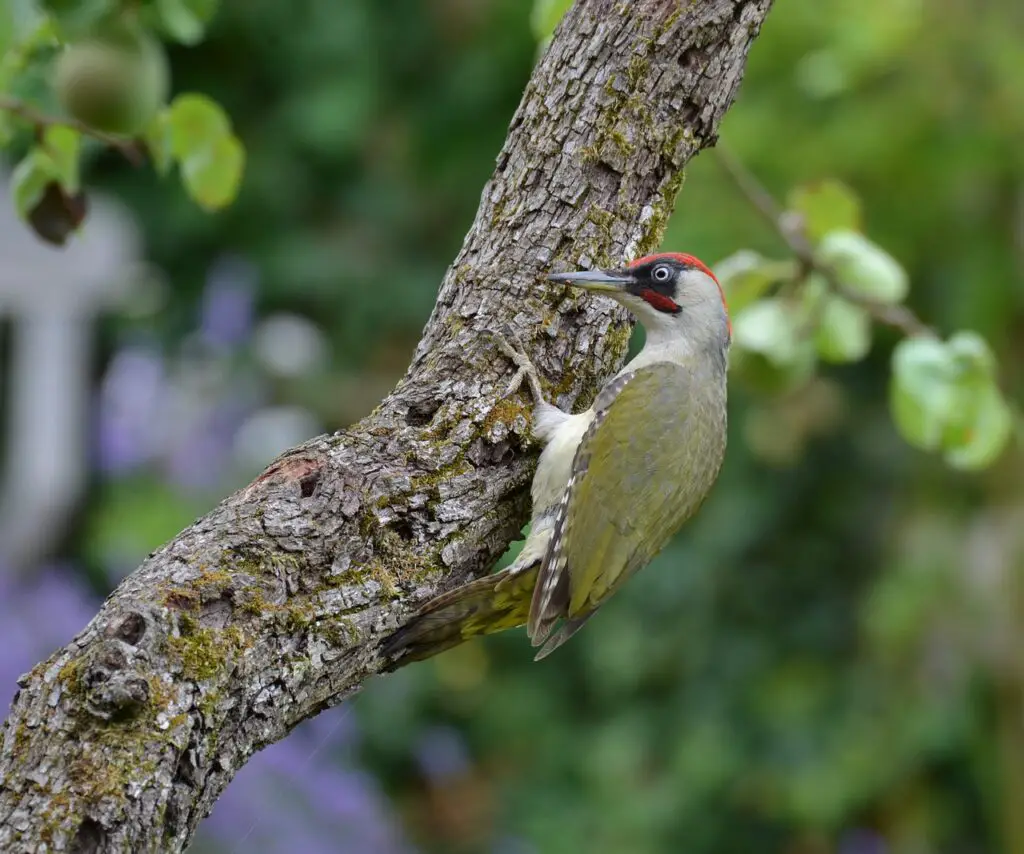
Woodpeckers have zygodactyl feet—two toes facing forward and two facing backward—which give them an iron grip on tree trunks. Combined with their stiff tail feathers that act like a kickstand, they can effortlessly scale trees while hammering away. This unique climbing style sets them apart from other birds, and they use it to access food and create nesting cavities. Fun fact: they’ll sometimes even hop sideways around a trunk like a feathery ninja. Their tree-climbing skills make squirrels look like amateurs.
5. Their Drumming Is Basically Bird Morse Code
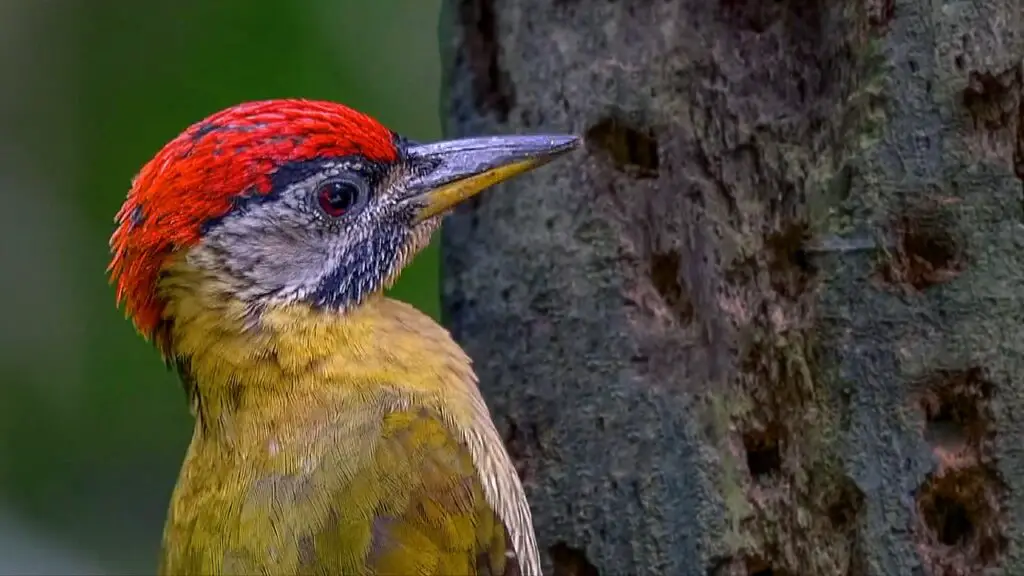
When woodpeckers aren’t searching for food, they’re often drumming on trees, metal poles, or even your gutters. This isn’t random—it’s how they communicate. Each species has its own drumming pattern, like bird Morse code, used to attract mates or warn rivals. Some woodpeckers love loud materials, so they’ll peck on anything that amplifies their sound. This is why your metal chimney might become their favorite drum set. Annoying for you, but a romantic serenade in the woodpecker world!
6. Their Heads Are Built to Take a Beating
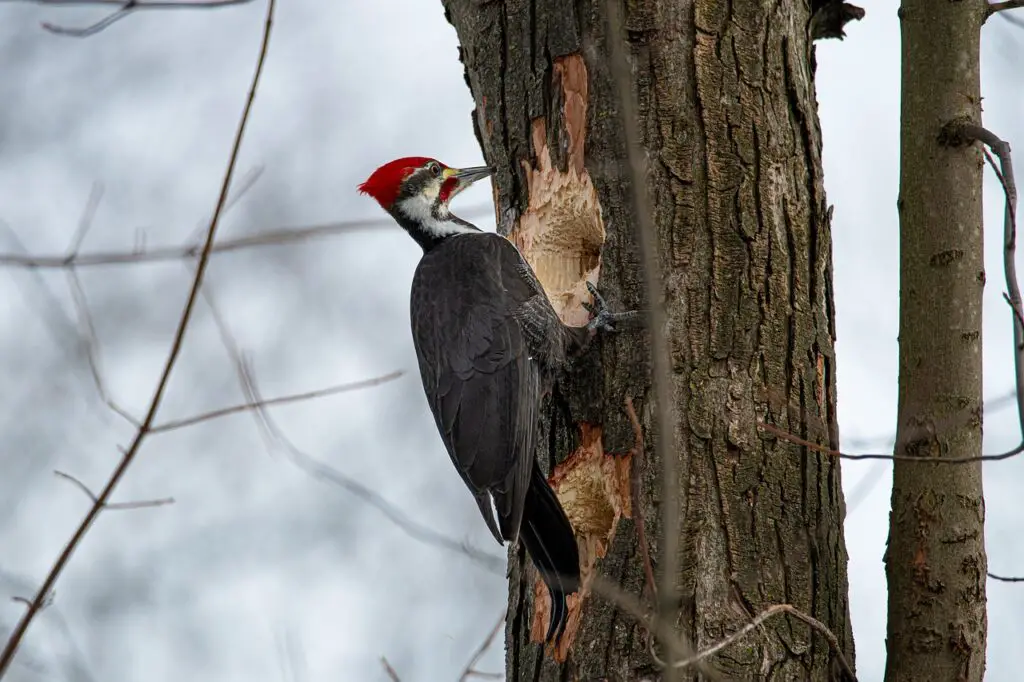
Woodpeckers’ heads are like shock-proof helmets. Their skulls are designed to evenly distribute the force of their pecking, and their brains are tightly cushioned to prevent concussions. They’ve even got a special hyoid bone structure that absorbs impact. Fun fact: their pecking generates a force equivalent to 1,000 times gravity (G-force), yet they suffer no brain damage. If humans tried the same, we’d probably end up in the ER. Woodpeckers may be tiny, but they’re packing some hardcore headgear.
7. They Can Peck Without Going Cross-Eyed
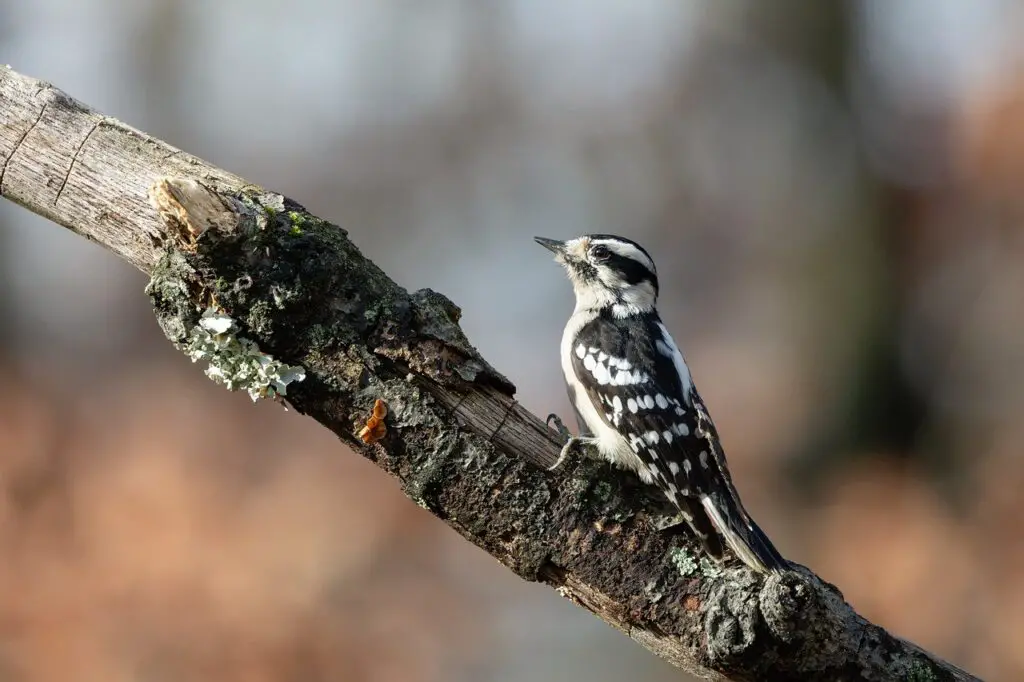
Ever wonder how woodpeckers avoid dizzying double vision while hammering away at trees? They have built-in “shutters” called nictitating membranes that close over their eyes during each strike. These membranes protect their eyeballs from flying wood chips and keep them focused on the task at hand. Fun fact: the membrane closes so quickly, it’s impossible to see with the naked eye. Woodpeckers literally blink at the speed of impact—no wonder they never miss their mark!
8. Some Woodpeckers Store Food in Trees
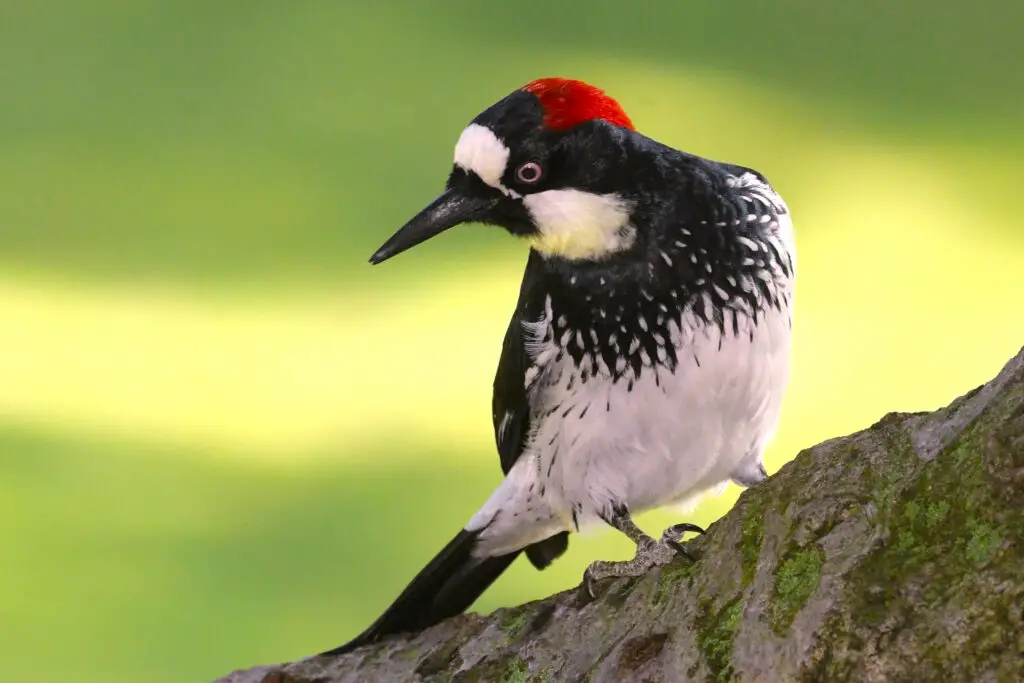
Acorn woodpeckers are the ultimate food hoarders, drilling holes in trees to stash thousands of acorns. They guard their “granaries” like feathered landlords, chasing away any freeloaders who try to steal their stash. These birds don’t just survive the winter—they thrive, thanks to their meticulous planning. Fun fact: a single granary tree can hold up to 50,000 acorns, making it a buffet that would put human pantries to shame. Who needs a fridge when you’ve got an oak tree?
9. They’re Surprisingly Good for the Environment
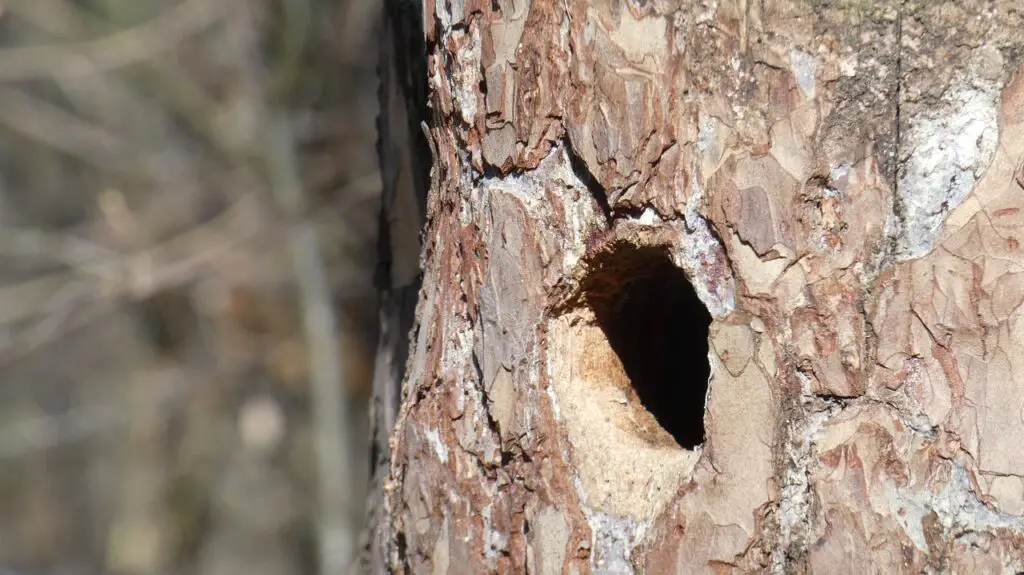
Woodpeckers might annoy homeowners by drilling into siding, but they’re actually ecological heroes. Their relentless pecking creates cavities that other species, like owls, squirrels, and bats, use as homes. They’re also natural pest control agents, devouring insects that live under tree bark. Fun fact: in some ecosystems, woodpeckers are considered a keystone species because so many other animals rely on their work. Annoying drumming aside, woodpeckers are like nature’s ultimate contractors, building homes for their woodland neighbors.
10. They Drum to Show Off Their Strength
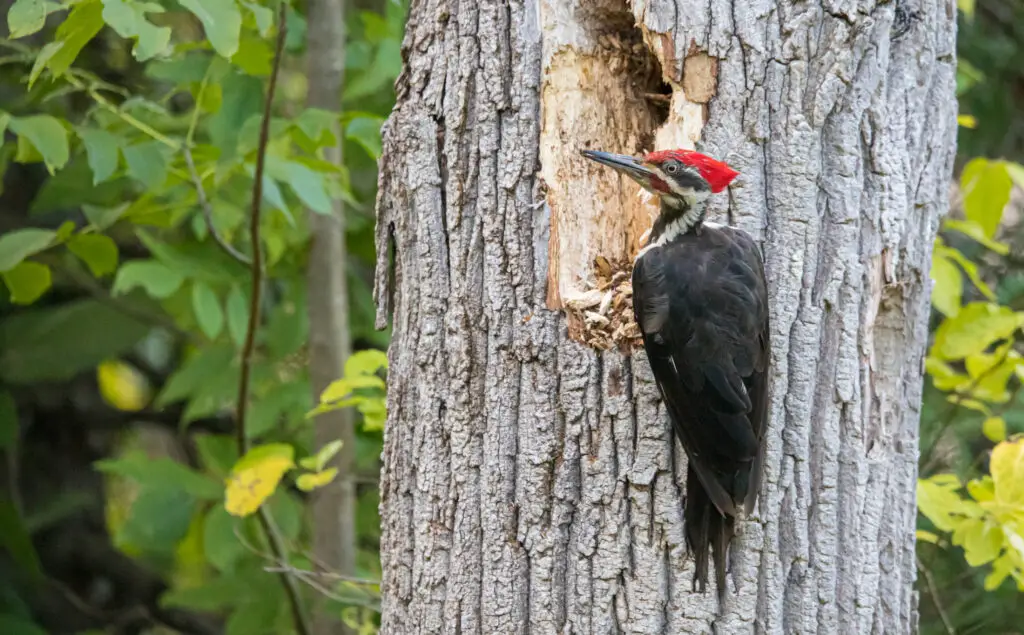
Pecking isn’t just about finding food or building nests—it’s also a flex. Male woodpeckers drum on trees and other surfaces to show off their strength and attract mates. The louder and more frequent the drumming, the more impressive they seem to potential partners. Some species even prefer to drum on hollow logs or metal poles for maximum volume. Fun fact: woodpeckers have been known to peck on street signs just to make more noise. In the bird world, drumming is the ultimate “look at me” performance.
11. Sharp Tail Spikes: Their Built-In Kickstand
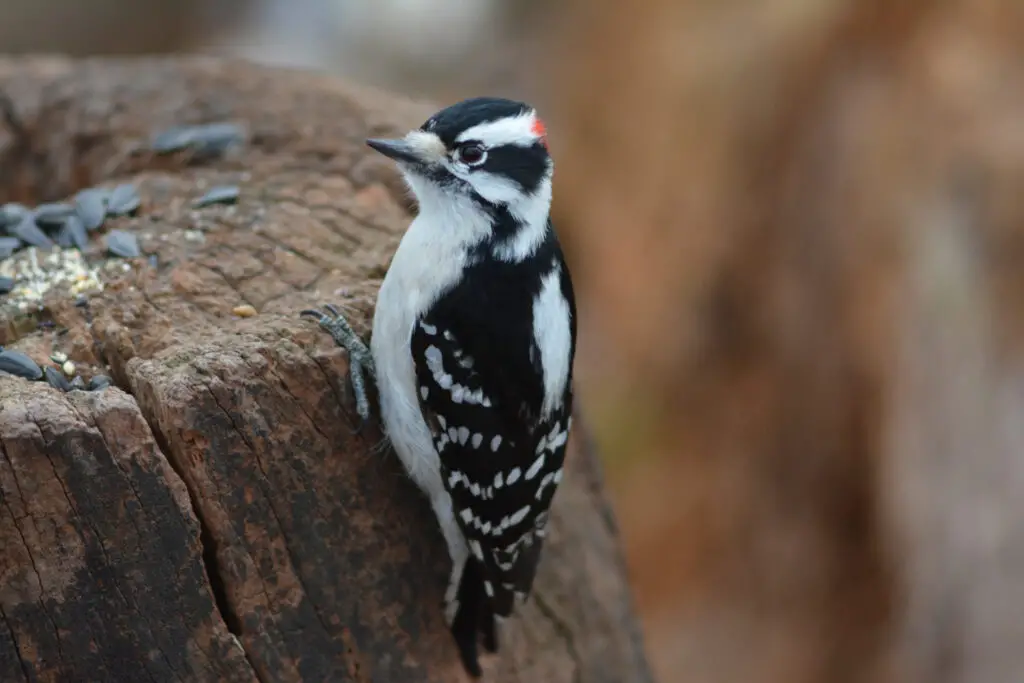
Woodpeckers use their stiff, spiked tail feathers like a kickstand to stabilize themselves while pecking. These tail spikes dig into the tree bark, providing extra support so they can balance and work efficiently. Their tails are uniquely adapted for this purpose, with strong, pointed tips that act as anchors. Fun fact: their tails are so tough that they rarely wear out, even after years of use. It’s a combination of engineering and evolution that lets woodpeckers hammer away at trees without toppling over—making them the ultimate multitasking climbers.


